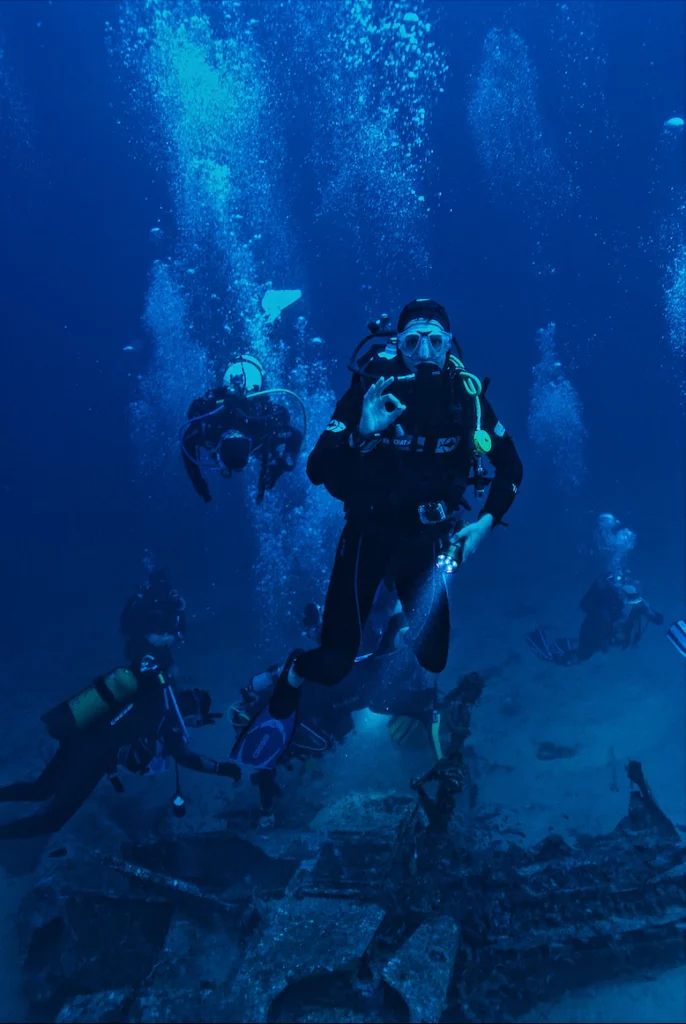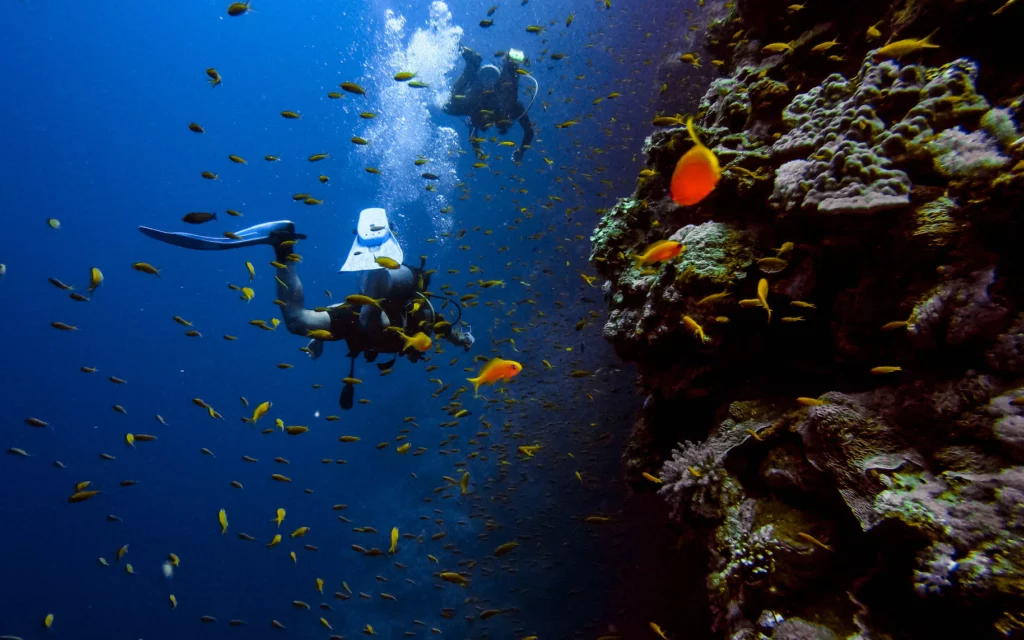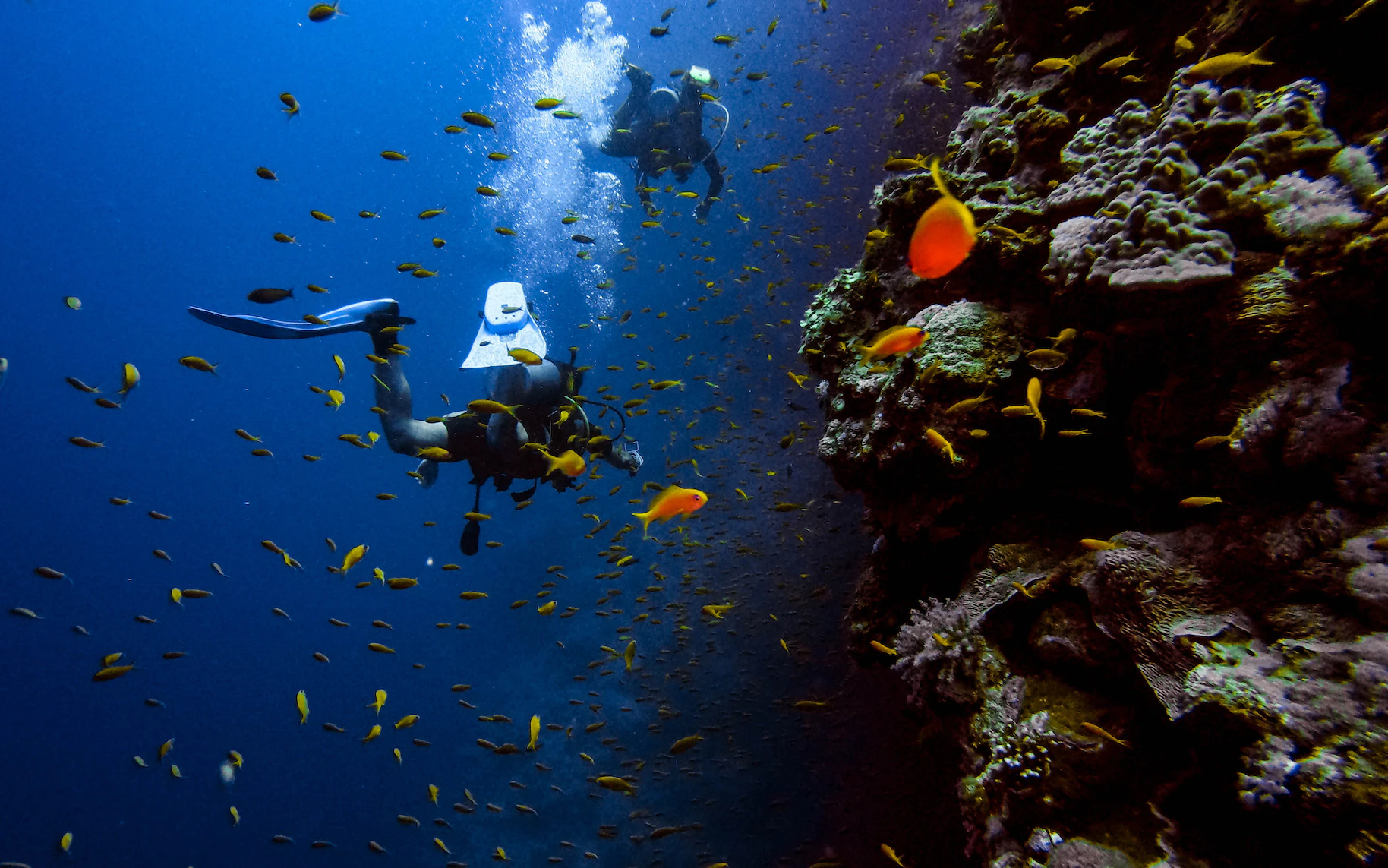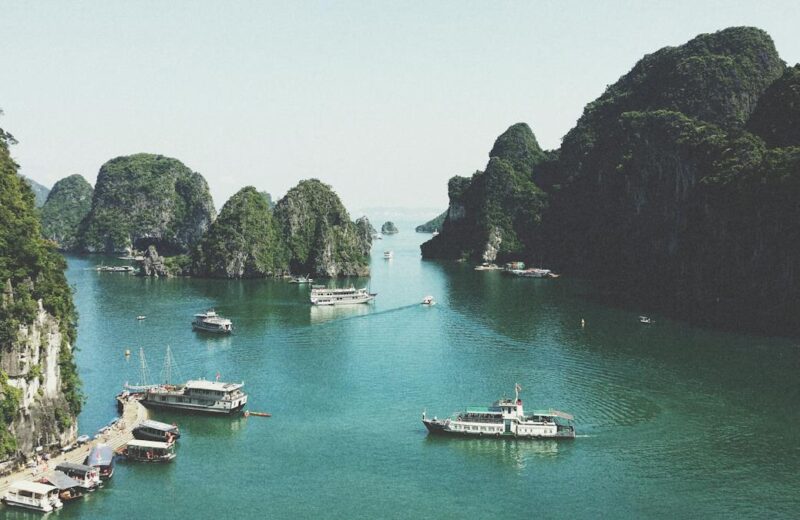Introduction
Scuba diving is an exciting and adventurous activity that allows individuals to explore the mesmerizing underwater world.
One peculiar aspect that often catches the attention of both divers and onlookers is the way scuba divers enter the water – by falling backward off the boat.
This distinctive method may seem counterintuitive, but it serves a crucial purpose in ensuring a safe and smooth dive experience.
Do you ever wonder Why Do Scuba Divers Dive Backwards?
In this article, we will delve into the reasons behind why scuba divers choose to fall backward into the water and explore some insightful quotes from great personalities that perfectly capture the essence of this unique practice.
Why Do Scuba Divers Dive Backwards
The Backward Roll Technique
The backward roll technique is the method used by scuba divers to enter the water. Instead of walking to the edge of the boat or shore and diving headfirst, divers sit on the edge of the platform or boat and perform a backward somersault into the water. This method may seem counterintuitive, but it serves several essential purposes for scuba divers.

The Physics Behind Scuba Diving
To understand why scuba divers fall backward, we need to grasp the basic principles of physics that govern underwater motion. Buoyancy, gravity, and water resistance play critical roles in scuba diving. When divers fall backward, they use these principles to their advantage, ensuring a safe and controlled entry into the water.
Advantages of the Backward Roll
The backward roll technique offers several advantages over other entry methods. From preserving the equipment to maintaining a stable body position, divers can avoid potential hazards and enjoy a smoother dive experience.
Safety Measures for Backward Diving
While the backward roll is generally safe, it’s crucial to follow specific safety measures to minimize risks. Proper training, communication, and equipment checks are essential for a secure diving experience.
Training and Practice for Backward Dives
Learning the backward roll technique requires practice and guidance. Scuba divers must undergo training to perfect this unique skill and ensure a seamless entry every time.
Overcoming Common Challenges
Backward diving comes with its set of challenges, especially for beginners. We will explore some common obstacles and provide tips to overcome them.
Famous Backward Diving Spots
Certain diving spots have gained fame for their breathtaking beauty and suitability for backward diving. Let’s dive into these incredible destinations.
Exploring Marine Life with Backward Diving
Backward diving allows divers to explore marine life in a different way. We will discover how this unique approach enhances the underwater experience.
Backward Cave Diving – A Thrilling Adventure
For the adventurous souls, backward cave diving offers a thrilling and unforgettable experience. We will take a plunge into the mysterious world of cave diving.
Underwater Photography Tips
Capturing the beauty of the underwater world through photography requires skill and knowledge. We will provide essential tips for stunning underwater photography.
Choosing the Right Scuba Gear
Having the appropriate scuba gear is vital for a safe and enjoyable dive. We will guide readers on selecting the right equipment for backward diving.
The Impact of Backward Diving on Marine Ecosystems
As responsible divers, we must consider the environmental impact of our actions. We will discuss the implications of backward diving on marine ecosystems.

Environmental Awareness and Responsible Diving
Promoting environmental awareness and responsible diving practices is crucial for preserving our oceans and marine life.
Common Myths and Misconceptions about Backward Diving
There are several myths and misconceptions surrounding backward diving. We will debunk these and provide accurate information.
The Future of Backward Scuba Diving
The world of scuba diving is continuously evolving. We will explore the future possibilities and advancements in backward diving.
Frequently Asked Questions (FAQs)
FAQ 1: Is backward diving safe for beginners?
Yes, backward diving is safe for beginners when done under proper supervision and training. It allows for a more controlled entry into the water, reducing the risk of injuries.
FAQ 2: What is the history of backward diving?
The history of backward diving can be traced back to the early days of scuba diving when it was introduced as a safer and more efficient entry technique.
FAQ 3: Can I do backward dives with any scuba gear?
Backward dives can be performed with standard scuba gear. However, it is essential to ensure that the equipment is in good condition and properly fitted.
FAQ 4: How can I improve my backward diving technique?
Improving your backward diving technique requires practice and guidance from experienced instructors. Regular training and honing your skills will lead to mastery.
FAQ 5: What are the best locations for backward diving?
Some of the best locations for backward diving include the Great Barrier Reef, the Blue Hole in Belize, and the cenotes of Mexico, among others.
FAQ 6: What are the potential risks of backward diving?
While backward diving is generally safe, there are some risks, such as equipment entanglement or collision with other divers. These can be minimized with proper training and awareness.
FAQ 7: Can I take photos or videos while diving?
Yes, many scuba divers capture their underwater adventures through photography and videography. However, it’s essential to prioritize safety and not disturb marine life.
FAQ 8: What marine life can I encounter while diving?
Backward diving opens up opportunities to encounter a wide variety of marine life, including colorful fish, corals, turtles, and even sharks in some regions.
FAQ 9: Is backward cave diving suitable for everyone?
Backward cave diving is an advanced form of diving and requires proper training and experience. It may not be suitable for beginners or those with claustrophobia.
FAQ 10: How can I be environmentally conscious while diving?
To be environmentally conscious while diving, avoid touching or disturbing marine life, follow dive site rules, and participate in local conservation efforts.
Conclusion
Backward diving remains a fascinating and effective technique for scuba divers to enter the underwater world gracefully. Understanding the physics, advantages, and safety measures associated with this approach is essential for every diver.
As we explore marine life and underwater wonders, let us remember to be responsible divers and protect the fragile ecosystems we are fortunate to encounter. So, next time you find yourself on the edge of a dive boat, embrace the backward roll, and embark on a memorable underwater adventure.
Should you have any question, you can let us know







